Essential Cable Planning for Healthcare Facilities
When COVID-19 emerged, the entire country learned the true meaning of “essential work.” “Healthcare” instantly rose to the top as the most essential business in the world. Through this pandemic, it became essential that healthcare facilities have the right medical equipment for treatment, but also a robust communications system. From real-time telemedicine, medical testing, extensive research and the ability to access universal medical records, the network infrastructure became the fundamental vehicle to transport the data faster and more efficiently than ever before, whether within the confines of one hospital or out to a multitude of facilities worldwide. As a result, the network has become the heartbeat of any healthcare facility.
Healthcare networks are expanding exponentially to face the challenges of managing diverse information such as patient records and bandwidth intensive scans and virtual diagnostic information. The amount of data that must be created, transmitted, managed and stored continues to increase dramatically. In addition, the broad adoption of standards-based electronic health record (EHR) system, which was implemented over a decade ago, created a global health information exchange. The use of this technology for clinical decision support improves patient care and ultimately can lower healthcare costs by facilitating communication, coordination, and collaboration among healthcare providers.
Many healthcare facilities have been re-evaluating their capability to deliver the technology needed in the healthcare environment today. Many significant life-changing advancements in patient care, diagnostic and research are supported by both wired and wireless technologies attached to the network infrastructure, which are constantly evolving.
Addressing Healthcare Infrastructure Challenges
System designers, consultants and I.T. managers who have faced the challenges of incorporating all of the growing healthcare applications, attest that there are many differences compared to planning an enterprise network for an office facility. These differences include a broader scope of applications which lead to increased outlet and device densities with their diverse termination locations, higher bandwidths and in more challenging installation environments.
To aid in the design and installation are two industry cabling standards, TIA-1179-A Healthcare Facility Telecommunications Infrastructure Standard, first published in 2010, revised in 2017; and ANSI/BICSI-004 Information Communication Technology Systems Design and Implementation Best Practices for Healthcare Institutions and Facilities, first published in 2012 and revised in 2018. The TIA standard addresses specific structured cable types for the backbone and horizontal, pathway and telecom room planning and recognizes the difference of outlet densities, depending on the different applications required for the specific facility areas (such as a waiting room versus an operating room). The BICSI standard builds upon the TIA document but hones in on providing guidance on the cabling layouts to address the diverse IP applications and system integration methods. Some of these applications include clinical and non-clinical IP-based systems such as building automation systems, nurse and code calls, paging, wayfinding, emergency radio, medical imaging, patient monitoring, television and A/V, and security and safety.
Each healthcare environment is unique and creates its own set of challenges and network priorities. Some of the major infrastructure concerns when planning network expansion, as addressed in the standards, include:
• Protected pathways – separating data cable from other services, such as gasses and liquids that may share the same above-ceiling spaces. In addition, pathways must be firestopped to eliminate the spread of fire as well as protect clean air within the facility.
• Bandwidth and data storage – MRI files and other advanced medical imaging files, such as Picture Archiving and Communications Systems (PACS), are bandwidth intensive. In addition to transmitting these files, networks also need to provide long-range storage which can vary from as little as seven years up to a lifetime, will translate to constant additions of servers and SANs to these facilities.
• Telecom Rooms (TRs) – as more and more IP devices are being added to the network, telecom rooms must be sized by number of applications, not necessarily by the number of users or floor size that it is serving.
• Outlet densities – the number of outlets and cables per area will also depend on the amount of applications needed to that workstation area.
Unique Cabling Solution
Staying on top of the IP application boom in healthcare means revamping and updating the existing infrastructure to meet the application bandwidth demands and device densities. This includes substantially increasing the cabling runs. In healthcare facilities, the TR should be dependent on the densities of applications on each floor and for each area, which may include custom designs and solutions.
One of the biggest growth areas is employing wireless for more than just voice and text communications. Mobile applications allow patients and medical professionals to access medical records and provide online diagnostics, but within the facilities, the healthcare professionals rely on wireless communications for patient monitoring systems (such as physical activity, heart rate and other biometric functions), patient tracking and wayfinding. More wireless applications require more wiring to the access points or sensors that enable these applications.
The biggest challenges to deploy increased IP applications, includes adding more connectivity to the equipment in the TRs and within the horizontal pathways to service the devices. Many of the older hospitals are struggling to find room for additional TRs and cabling. And a major roadblock of installing cable on premises are the regulations that apply to infection control requirements (ICR). ICR limits the time allowed for installers to be onsite, as well as requiring the proper equipment such as HEPA carts and protective gear.
System designers are looking at unique cabling solutions that would limit the installation disturbance by increasing the run lengths from the TR. One solution is the GameChanger Cable™ which can provide both data and power to many devices that are well beyond that 100-meter limit. Paige’s patented GameChanger cable, which is UL-verified, delivers 1Gb/s Ethernet and PoE+ up to 656 feet (200 meters) and 10Mb/s Ethernet and PoE+ up to 850 feet making it an ideal for cameras, WAPs and other edge devices. This cable eliminates intermediate IDF or telecom enclosure requirements and the need to install repeaters, power supplies and other equipment, which are costly and introduce additional points of failure in the network.
To meet increasing demands placed upon them, modern healthcare institutions must retool and rebuild. This includes looking at solutions that fit their environment. There is not a “one-size-fits-all” as each application’s requirement and the location of the device will generate opportunities for creative solutions, such as the GameChanger.

